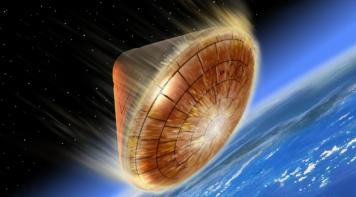In hypersonic conditions, a plasma sheath is created around the vehicle possibly causing critical damage. In recent years, our research team has found that, in certain conditions, a plasma can be confined in the form of a spherical ball when subjected to large acoustic oscillations. These findings were made in the applied research of a prototype of a sulfur plasma light source. Later, another research team discovered that in such conditions, by performing advanced acoustic analysis, a very particular force arises, the pycnoclinic acoustic force (PAF).
The PAF is proportional to the background density gradient and the square of the fast oscillating acoustic velocity field magnitude. The PAF would be strongly involved in plasma confinement in such a situation.
Our idea is to make a theoretical study on whether PAF can be present in hypersonic flight conditions and if it plays a role in the plasma development close to the vehicle body possibly increasing the plasma density and, consequently, the probability of malfunctioning or hazardous event. The supersonic shock wave would provide the required background density gradient as well as the acoustic field.
The possible findings could provide guidelines on how to reduce the strength of the PAF thus limiting the effect of the plasma sheath. The chemistry of the plasma would also be taken into account so that the entry into a particularly aggressive atmosphere could be envisaged as in the case of Venus; the PAF might indeed increase the abrasive effect on the vehicle, thus increasing the likelihood of a failure.

